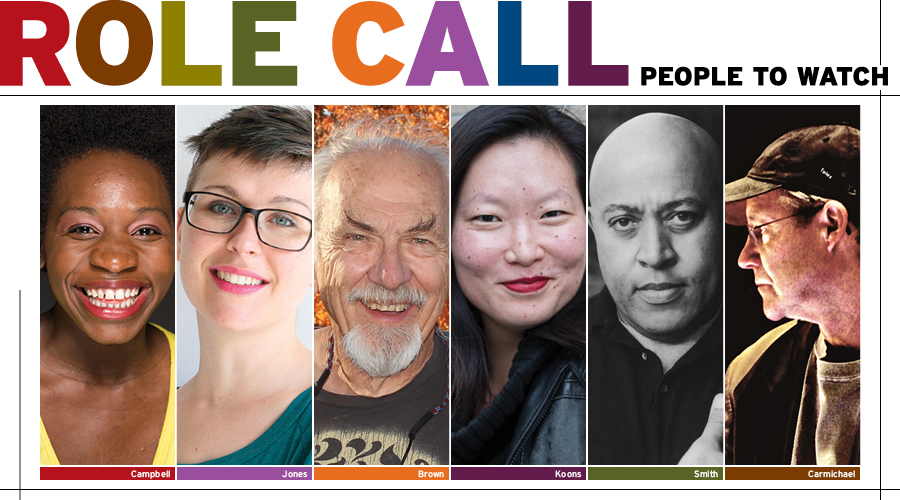Apphia Campbell
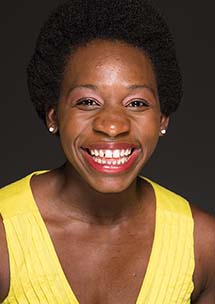
Profession: Playwright/actor/producer
Hometown: Sarasota, Fla.
Current home: Edinburgh
Known for: Campbell has most recently been touring the U.K. and Europe with her one-woman play, inspired by the life and music of Nina Simone, Black Is the Color of My Voice, which also had 12 sold-out nights in Shanghai. In 2015, she garnered accolades for her performance as Celie in The Color Purple with Sarasota’s Westcoast Black Theatre Troupe. She’s also the creator of the show Holiday Hitch.
What’s next: She plans to have a new original piece (working title: Moment of Truth) ready next spring.
What makes her special: “She caught the theatre bug early,” recalls Nate Jacobs, founder and artistic director of Westcoast Black Theatre Troupe and longtime mentor to Campbell. “She is a true professional, a God-gifted actress, and has always been like this since she was a kid. I’ve seen her grow from a kindergartner to a woman who has come into her own artistic voice and is making a name for herself. Most actors wait for the industry to happen upon them, but she has forged her way into the industry. She has carved out her own path and her own opportunities.”
How she got started: Beginning theatre at the tender age of 4, Campbell grew up under Jacobs’s tutelage, which fanned the flames of her passion for theatre throughout her elementary- and secondary-school education. “After working with Nate for many years, I knew that pursuing a career in the theatre was the path I wanted to follow,” says Campbell. By the time she was in college and Jacobs was forming a new theatre company in her hometown, she auditioned, and the rest is history.
Jane B. Jones

Profession: Education director/playwright
Hometown: Culpeper, Va.
Current home: Louisville, Ky.
Known for: Jones serves as education director at Actors Theatre of Louisville; she also wears the hats of playwright, carpenter, and director. Her play Dress Up was produced at the 2012 Tens at Actors Theatre, and This Is Bullshit was presented in 2013 as part of a series of car plays in Louisville. She has created several puppet shows for Squallis Puppeteers, including The Davenport Players and Goodnight, Monster.
What’s next: An MFA candidate in writing at Spalding University, she is currently working on a script about a group of women running an interstellar war room—and the women who clean the office when they’re not there. Jones is also working with a local high school helping to develop a puppet theatre adaptation of Hansel and Gretel that will tour to elementary schools in the spring.
What makes her special: Les Waters, Actors Theatre’s artistic director, counts himself “inspired by Jane’s passion and commitment to her work. She’s exciting and always surprising.”
On working with young people: “I think students get a bad rap for being apathetic and disinterested or just bad audiences,” says Jones. “If students don’t have the context to understand what’s happening onstage, if they feel stupid because they ‘don’t get it,’ they’ll shut down. It’s our job to provide them with the tools to have full access to the production. Once they feel that the play is ‘for’ them, they are often the most enthusiastic, engaged, and generous audiences.” She’s also pretty high on her region, enthusing, “Maybe it’s a Southern(ish) thing, but I’ve never been in a community that lifts each other up in quite the same way.”
John Gary Brown
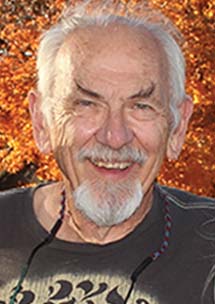
Profession: Photographer
Hometown: Saginaw, Mich., raised in his parents’ hometown of Viola, Ark.
Current home: Lawrence, Kans., and Creede, Colo.
Known for: He’s taken photos of about 200 shows at Creede Repertory Theatre since 1974, many featuring Christy Brandt, who married Brown on the theatre’s stage in 1981.
What’s next: He will photograph CRT’s next season, which begins next May, and he’s writing a memoir in which his work with the company will figure prominently.
What makes him special: “I can’t think of another theatre that has a visual record as detailed as ours,” says CRT artistic director Jessica Jackson. “That’s all Brownie. His commitment to photographing all the humans of Creede Rep, not just the ones onstage, makes us a better company.”
From oils to drama: Brown says he finds live theatre fascinating, regardless of the genre. In 1974 the first show he shot was The Boy Friend, in which “the worst that could happen was temporary inconvenience for giddy schoolgirls who tried to romance the boys on the beach.” The following summer, however, he learned to love The House of Blue Leaves, “where the dark comedy illuminated our thwarted aspirations and human weakness, and the laughter in the audience was laced with discomfort.” Though he makes his living selling his oil paintings, he says he keeps returning to photograph CRT because theatre promotes “real human contact in an age of estrangement.” These interactions, he continues, happen “when a sophisticated, thoughtful audience watches real human beings on the stage,” and sometimes in the greeting line following each CRT performance, “where actors and patrons become just people who can shake hands and engage in conversation. At a time when our attention is often monopolized by electronic devices, live theatre gives us a chance to come up for air and get a taste of what life is all about.”
Jenny Koons
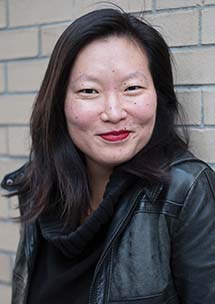
Profession: Director
Hometown: Minneapolis
Current home: Queens, N.Y.
Known for: She directed The Odyssey Project, a series of 12 site-specific free public performances in New York City over 12 months. Each performance was centered around a stage of “the hero’s journey” and adapted to different neighborhoods, from leading audiences through secret tunnels in Chinatown to performing in Spanish in Flushing Meadow and Corona Park.
What’s next: With Andy Mientus, Van Hughes, and the Brooklyn band Teen Commandments, she’s working on a new synth-pop musical Manhattan Kids, and she’s also collaborating with Michael Friedman, incoming artistic director of New York City Center’s Encores! Off-Center, to curate artistic engagement programming for the 2017 season.
What makes her special: Jonathan McCrory, director of the theatre arts program at the National Black Theatre, calls Koons an “artivist” (artist and activist). He says she “has used her passion, love, and creativity to build up the community around her to examine and embody true equity, diversity, and parity in the field,” adding that she is a “leader whose light is a beacon that is summoning us to envision a world that is prepared to embrace the future.”
All in the community: Koons is inspired by theatre as a tool for social change and sees the role of director as that of a community organizer. She wants to “make work that invites people in…that collides artists from different backgrounds and forms to discover something new. Work that represents the world I see when I walk through Queens. Work that redefines what it means to be human, and what it means to be an American, in these transformative times.” She adds: “I want to make theatre, and run theatres, that change the world.”
Keith Randolph Smith
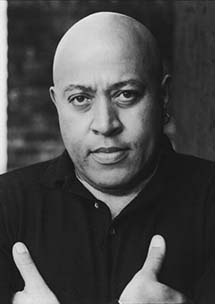
Profession: Actor
Hometown: Cleveland
Current home: New York City
Known for: Broadway credits include American Psycho, Fences, and King Hedley II. Other credits include Jitney at New York’s Second Stage, God of Carnage at Atlanta’s Alliance Theatre, and The Dreams of Sarah Breedlove at Chicago’s Goodman Theatre.
What’s next: Jitney on Broadway at Manhattan Theatre Club, directed by Ruben Santiago-Hudson, starting Dec. 28.
What makes him special: According to Santiago-Hudson, who’s worked with Smith so many times that, he quips, “I can’t even really add it up,” what makes the actor so compelling onstage is “his tremendous vulnerability. For a man his size to be comfortable in sharing his vulnerabilities, his frailties, his sensitivities—you as an audience member become immediately invested in the journey of that actor and character.” He also invests in his fellow performers: Santiago-Hudson relays a story he heard from actor Brandon J. Dirden. When Dirden first moved to NYC, Smith met him at a Dunkin’ Donuts and showed the junior actor “the ins and outs of the business in New York, saying, ‘If you need something, a shoulder to lean on, a cup of coffee, an audience member, call me.’”
A divine calling: Smith was a journalism major in college until he saw a flyer to audition for Getting Out by Marsha Norman. “I had a most amazing experience and changed my major after the show closed,” Smith recalls. “I feel that the theatre appealed to my questioning instinct—about life and the human condition—and opportunities to be a part of a collective that worked towards a shared goal together.” To him “the theatre is sacred and divine. It is a way to help me understand other points of view, go places that are foreign to me, and find out how I feel about things that reach out and grab my heart.”
Steve Carmichael
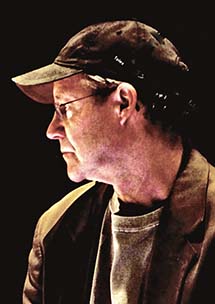
Profession: Lighting designer
Hometown: Cincinnati
Current home: Santa Fe, N.M.
Known for: For years he headed the theatre arts program and the lighting design department at DePaul University, where he also founded Shakespeare on the Green, a professional outdoor festival which staged al fresco classics for 12 years. He’s also designed lights for Upstream Theater in St. Louis, THEATERWORK in Santa Fe, Chicago Ballet Arts, and Phoenix Theatre in Arizona.
What’s next: Next month at Upstream he’ll light The Year of the Bicycle, a new play by South African writer Joanna Evans, and in the spring he’ll light a show for the Yale Baroque Opera Project. “I’m a big fan of Monteverdi and that period of opera,” he says.
What makes him special: Upstream’s artistic director, Philip Boehm, calls his colleague’s lighting “poetic, but never domineering,” which he attributes in part to Carmichael’s own background as a playwright. “He understands how to serve the play from so many points of view. He loves poetry, and all art that compresses layers of meaning into an aesthetic form. He does more than light shows: He illuminates what’s below the surface.”
Formative influences: In the 1970s Carmichael worked as a stage carpenter, then master electrician at Juilliard around the time John Houseman was starting the Acting Company there and Ming Cho Lee was a resident designer. Later, as a cofounder of the Aspen Playwrights Conference, Carmichael basked in the presence of the troupe’s critic-in-residence, Group Theatre icon Harold Clurman. “We couldn’t believe our luck that he said yes when he asked him,” marvels Carmichael, who says he largely gave up early dreams of playwriting when he discovered another calling. “I fell in love with teaching,” he says. “I like being around young theatre people—they’re still optimistic about things.”

